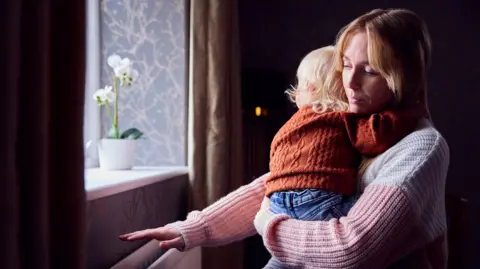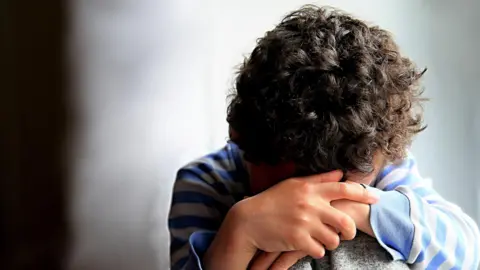Handling of child poverty plan is 'catalogue of failures'
 Getty Images
Getty ImagesThe Assembly's Public Accounts Committee (PAC) has said the Department for Communities' handling of the Child Poverty Strategy is a "catalogue of failures," where children and families are not at its heart.
The scathing report on the "shortcomings" has been published and makes 11 recommendations to tackle child poverty.
The strategy was initially developed by the office of the First and Deputy First Ministers, and then passed to the DfC.
It ran from 2016 to 2022, and since its conclusion, no similar scheme has been put in place.
'Absolutely shocking'
 Getty Images
Getty ImagesThe report by the PAC said that during its implementation the strategy was not sufficiently targeted nor funded and had "unacceptably poor" arrangements for accountability.
The PAC said that the rate of child poverty grew from a consistent 20% to 24% in 2022-23 and that the DFC "appeared to be too far removed" from those children and families experiencing poverty.
Speaking to the Good Morning Ulster programme on Thursday, the chairman of the Public Accounts Committee, Daniel McCrossan, said: "Make no mistake about it, we will be calling those responsible for implementing this strategy back before our committee again to ensure that the recommendations have been carried forward."
McCrossan described the evidence sessions held by the PAC as “absolutely shocking”, and said the department was "just not at the races on this issue whatsoever".
"Ministers and the executive have said this is important for them, but we have seen no action really," he added.
He called for the DfC to confirm that a new anti-poverty strategy will be presented to the Executive by the end of March.
In its report, the Public Accounts Committee considered the Northern Ireland Audit Office’s (NIAO) report on child poverty which was published in March.
Poverty the 'root of our policy conundrums'
The number of children living in poverty in Northern Ireland showed a significant increase in 2022.
They indicated that about 109,000 children or 24% were living in relative poverty, compared to 19% in 2021.
Sheena McMullen from Action for Children NI told the programme that "we pay for poverty so much already in so many ways".
She described the reasoning of "funding constraints" for not implementing a child poverty strategy as unjustifiable.
"The audit office found that child poverty is costing us £1bn per year," she said.
"Poverty is the root of so many of our policy conundrums leading to demands on health services, education services , justice and social care settings."
Ms McMullen said the report has “come at a good time” and that the executive office now “needs to show us that they are taking this issue seriously".
A Department for Communities spokesperson said: “The Department welcomes the PAC’s interest in this important issue and will consider the Committee’s recommendations fully.”
How is poverty measured?
There are two main measurements of low income used by the government. Income is counted as the money a household has to spend after housing costs are taken into account.
Absolute poverty measures how many people this year cannot afford a set standard of living. The Department for Work and Pensions currently defines it based on the living standard an average income could buy in the year ending in March 2011. If your income is 40% below this, after adjusting for rising prices since then, you are classed as living in absolute poverty.
Relative poverty is the number of people whose income is 40% below the average income today.
An individual is considered to be in relative poverty if they are living in a household with an income below 60% of the typical UK income.
This is a measure of whether those in the lowest income households are keeping pace with the growth of incomes in the population as a whole.
